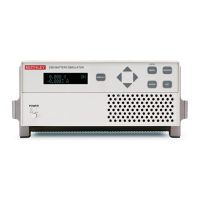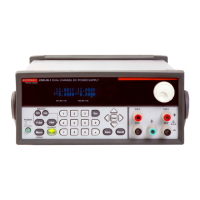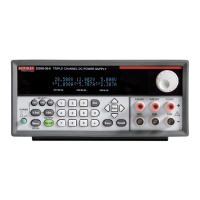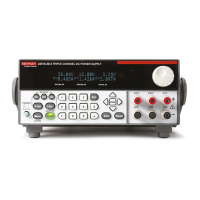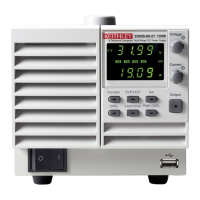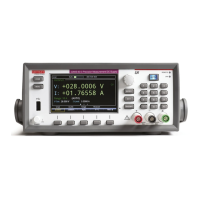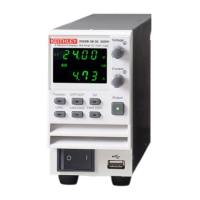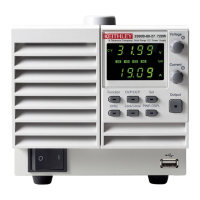3-4 Pulse Current Measurements
Measurement configuration
NOTE Current range is selected from the CURRENT RANGE item of the menu. Integration
times, average readings count, trigger delay and trigger level are set from the PULSE
CURRENT item of the menu. Details on integration rate, average readings count,
trigger delay and trigger level are provided in the “Overview”.
Table 1-2 (in Section 1) shows the menu structure. Rules to navigate the menu follow
the table.
Current range
For pulse current measurements, the AUTO range selection is functionally a no-op (no oper-
ation). The instrument will not autorange with the pulse current measurement function selected.
For Models 2303 and 2303B, pulse current measurements are performed on the 5A range,
regardless of the range selection.
For Model 2303-PJ, pulse current measurements are performed on which ever range the
instrument is on when the pulse current measurement function is selected.
Current range is linked to current limit. Therefore, as a general rule, the user selects the cur-
rent range before setting the current limit. See “Outputting voltage and current” (in Section 2)
for details on current range and current limit. Current range is selected from CURRENT
RANGE item of the menu.
Integration times
Use the following items of the PULSE CURRENT menu item to set integration times:
• HIGH TIME — Use to set the integration period (in µsec) for high pulse-current mea-
surements.
• LOW TIME — Use to set the integration period (in µsec) for low pulse-current
measurements.
• AVERAGE TIME — Use to set the integration period (in µsec) for average
pulse-current measurements.
• AUTO TIME — Use to automatically set the integration times for high, low, and average
pulse-current measurements. These times are based on detecting the pulse and remain un-
til another auto time is performed or the times are manually changed.
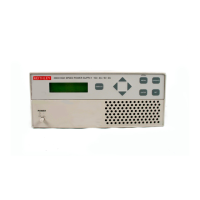
